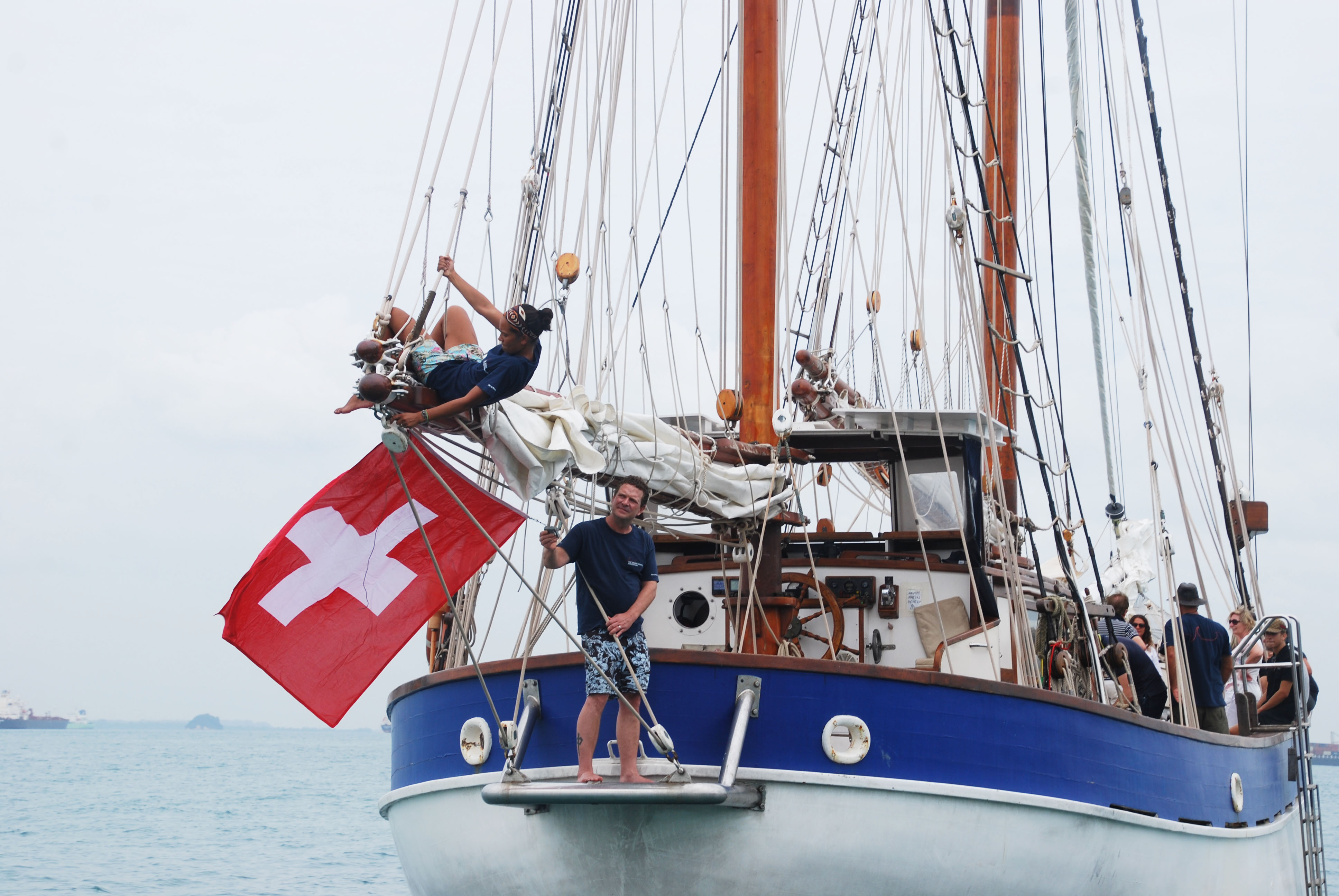The Indian Ocean, an unexpected methane sink?
The Swiss expedition engaged in a 4-year journey around the world to measure the human impact on the oceans and raise awareness about sustainable development issues achieved the crossing of the Indian Ocean and unveils its first results.

© Pacific Foundation
Since 2015, The Ocean Mapping Expedition has traveled the oceans to measure the human impact on their evolution and raise awareness about sustainable development issues. The scientific program The Wind of Change, led by researchers from the University of Geneva (UNIGE) in collaboration with the Pacific Foundation, fits into this framework and specifically studies the greenhouse gases at the surface of the oceans. After traveling the 4,300 miles onboard sailboat Fleur de Passion, the longest ever observation of greenhouse gases on the surface of the ocean from a boat, the results of the scientists suggest that the Indian Ocean could be an important sink for atmospheric methane. This study confirms the urgent need to obtain more reference field data in order to re-evaluate the role of the oceans in the carbon cycle in the context of changing global climate.
While the Swiss sailboat Fleur de passion, the logistics platform of the expedition The Wind of Change, achieved on 23rd May 2018 in Madagascar her crossing of the Indian Ocean from Jakarta, the onboard equipment continuously monitored the concentration of methane and carbon dioxide all along the track of the expedition. These results are providing reference field data both unprecedented and crucial to better understand the carbon cycle in the general context of climate change. "For the first time ever, we’ve been able to assess and quantify the near-surface atmospheric methane and carbon dioxide concentrations while performing the longest longitudinal transect of an ocean, namely the Indian Ocean", explains Daniel McGinnis, Head of the Aquatic Physics Group at the Faculty of Science at UNIGE and responsible for the program in partnership with the expedition. "And our data shows us that the Indian Ocean continues to be an important CO2 sink, though there are some intriguing peaks that need more investigation."
Atmospheric methane absoerbed by the Indian Ocean
More surprisingly, however, is that the Indian Ocean could be an unexpected sink of atmospheric methane. "In general, it is thought that almost all oceans and inland freshwaters are sources of methane to the atmosphere," continues McGinnis. "But over the Indian Ocean, the methane above the sea surface is consistently about 5-6% lower than atmospheric concentrations." Though more investigation is needed, it appears at first glance that the Indian Ocean may uptake atmospheric methane.
The methane level is proportional to the human activity
These reference data collected by The Winds of Change program during the 5-week crossing of the Indian Ocean come in addition to those gathered during the first four months of the program between the Philippines and Jakarta through Brunei, Kuching and Singapore.
Between Mactan Island in January 2018 and the Indonesian capital, where The Ocean Mapping Expedition stopped in April, The Winds of Change program identified some first "hot spots" , areas with very strong emissions of greenhouse gases deserving as such a closer assessment.
"Methane and carbon dioxide concentrations clearly rise near cities, approaching islands and shallow seas, in other words in areas that are influenced by human activities or experience higher algal growth," continues McGinnis.
An urgent need to revise our concepts on the global carbon cycle
The ambition of The Winds of Change monitoring program for greenhouse gases on the surface of the oceans is to provide the scientific community with unprecedented and reference field data and therefore to contribute to a better understanding of the role of the oceans in the current changing global climate. In view of the worrisome evolution of the climate and the resulting ocean acidification, it is becoming increasingly urgent to have baseline data available to revise our concepts on the global carbon cycle.
"An outcome of the Winds of Change mission is that areas of research interest will become visible to a diverse audience of scientists, coastal areas managers and stakeholders. We hope to raise interest especially in those areas where environmental research is insufficient and convey data and information to those who have the means to investigate issues linked to greenhouse gas emissions. Ultimately, we also wish to raise awareness within local communities met on the track of the Fleur de Passion and the global community, "says McGinnis.
To perform The Winds of Change program, 33m-long Fleur de Passion - a former WWII minesweeper from the German Navy converted into a ketch and now the biggest sailboat under Swiss flag - is equipped with a ultraportable greenhouse gas analyzer with a sampling port positioned 16 meters above the sea surface on the aft mast and automatically collects methane and carbon dioxide readings every 1 minute. The boat will hence fulfill her mission for the climate until the return of the expedition back to Seville in September 2019.
Launched in Seville in April 2015, The Ocean Mapping Expedition consists in a 4-year journey around the world in the wake of Ferdinand de Magellan combining science, éducation and culture some 500 years after the first ever circumnavigation. Organized by the Swiss Geneva-based Fondation Pacifique, its goal is to measure the human impact on the oceans and raise awareness about sustainable development issues.
7 Jun 2018